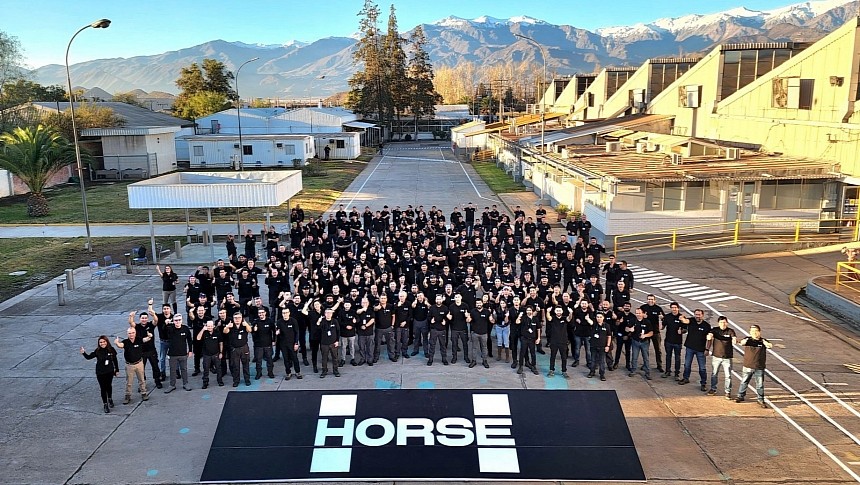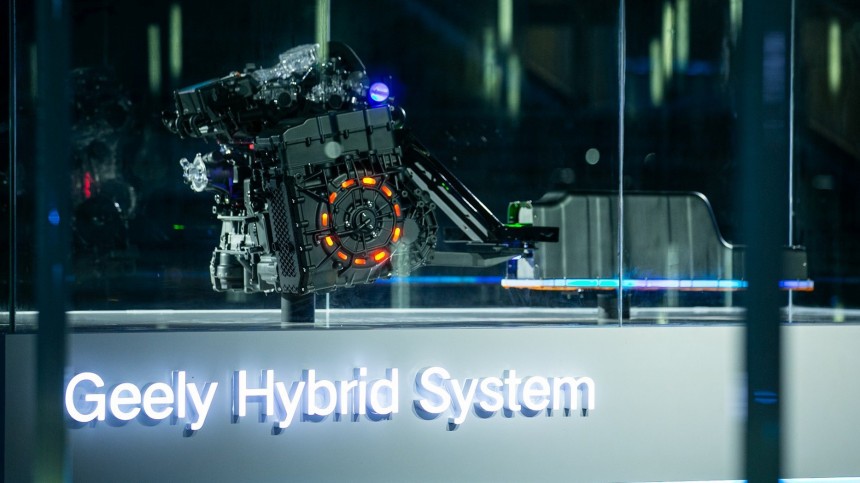In August 2021, the first rumors about Renault getting rid of its internal combustion engine (ICE) operations emerged. At first, the French company would sell all its factories and ICEs to Geely and buy what it needed from the Chinese automaker. Complications with Nissan probably led the deal to be announced as a joint venture called Horse, but we are yet to grasp all implications the new division will have. In the end, the main effect seems to be that Horse will be a Troyan horse for Geely to enter new markets.
Just think about it: with Horse, Geely now has engine factories in Argentina, Brazil, Chile, Portugal, Romania, Spain, and Turkey. None of Geely's factories are in the deal, which shows the idea was really for Renault to get rid of its combustion engines, not for the companies to join forces and create a powerhouse in ICE manufacturing.
That kills one of the most significant possibilities the deal could offer to Renault: the use of the DHE1.5 engine in its cars. This is currently the world's most efficient combustion engine, with a thermal efficiency of 43.32%. Before that, BYD had the best mill, the Xiaoyun, which could convert 43% of the chemical energy of fuels into movement. Theoretically, Renault vehicles could have that engine, but Geely will probably save them for its own cars.
Considering how expensive it is to manufacture these mills anywhere, Geely now has quite an advantage in establishing a factory in the locations mentioned above. With the automotive plants for sale in Brazil, Geely could start producing vehicles there for Latin America. It could also go to Argentina and still have a sure supply of local engines in that country. The same story repeats in Europe, where Geely can choose where to make the bodies that will receive the ICEs Horse can put together for them. Strategically speaking, that is what makes more sense for Geely. Why else would it buy a technology that so many are trying to kill?
The safest bet is on hybrids or plug-in hybrids with a generous all-electric range. Geely could sell them in Latin America or Europe under several brands, but the company's own badge is the most likely. The Chinese automaker tried to establish itself in Brazil and a few other South American markets in the past. However, the plan did not unfold as expected – primarily because it depended on imported cars or components. Making them locally may turn them into a more attractive option. For hybrids and plug-in hybrids, that would also demand the local production of battery packs. Considering how bad the market is for new cars in South America, only Europe should see Horse factories become Troyan horses – at least in the short term.
The division's website states that it has a production capacity of 3.2 million engines per year and that "Horse is born to unlock the potential of combustion technology to be a motor for transition." Interestingly, the joint venture does not point to the final destination of this process. Although Renault assumed it would be battery electric vehicles (BEVs) – hence its other division being called Ampere – the page notes that "the reality is that it's not just one solution that will take us on the journey to better mobility." In other words, it is betting on hybrids.
Horse's page also clarifies what Aramco's role will be in the joint venture. Although the Saudi Arabian giant lives from oil, it will help Horse with synthetic fuels. Some ICE fans believe that these fuels will keep these mills alive, but their most rational use would be as a means for hydrogen storage and to keep older vehicles running without the same impacts. Synthetic fuels may not add carbon to the atmosphere as fossil fuels do, but they will still produce pollutants such as nitrogen oxides if they are burned. In other words, they may not increase climate change, but they will keep on harming people's health.
Although all its facilities have existed for several years already, Horse has only started its activities. The division is now sharing images and videos of its teams worldwide wearing new uniforms that make them Horse employees, not Renault's or Dacia's. These brands should still produce ICE vehicles, even if that makes the company's division into two branches more challenging to understand. Besides, these automobiles would not exist without engines and gearboxes.
If things go according to Renault's plan, the French carmaker should eventually sell its 50% stake in Horse to Geely, which will become a business case people will study for years on how to get rid of investments in technology being disrupted. However, Geely never made its plans for Horse as clear as Renault did. If the tides turn and ICE remains in production for longer than most governments want, the French automaker will have to pay a competitor to keep selling what it has been delivering for more than one hundred years. It may also see this competitor enter new markets with the engines it used to produce. Whatever the result is, it will be enlightening to watch it develop.
That kills one of the most significant possibilities the deal could offer to Renault: the use of the DHE1.5 engine in its cars. This is currently the world's most efficient combustion engine, with a thermal efficiency of 43.32%. Before that, BYD had the best mill, the Xiaoyun, which could convert 43% of the chemical energy of fuels into movement. Theoretically, Renault vehicles could have that engine, but Geely will probably save them for its own cars.
Considering how expensive it is to manufacture these mills anywhere, Geely now has quite an advantage in establishing a factory in the locations mentioned above. With the automotive plants for sale in Brazil, Geely could start producing vehicles there for Latin America. It could also go to Argentina and still have a sure supply of local engines in that country. The same story repeats in Europe, where Geely can choose where to make the bodies that will receive the ICEs Horse can put together for them. Strategically speaking, that is what makes more sense for Geely. Why else would it buy a technology that so many are trying to kill?
The division's website states that it has a production capacity of 3.2 million engines per year and that "Horse is born to unlock the potential of combustion technology to be a motor for transition." Interestingly, the joint venture does not point to the final destination of this process. Although Renault assumed it would be battery electric vehicles (BEVs) – hence its other division being called Ampere – the page notes that "the reality is that it's not just one solution that will take us on the journey to better mobility." In other words, it is betting on hybrids.
Horse's page also clarifies what Aramco's role will be in the joint venture. Although the Saudi Arabian giant lives from oil, it will help Horse with synthetic fuels. Some ICE fans believe that these fuels will keep these mills alive, but their most rational use would be as a means for hydrogen storage and to keep older vehicles running without the same impacts. Synthetic fuels may not add carbon to the atmosphere as fossil fuels do, but they will still produce pollutants such as nitrogen oxides if they are burned. In other words, they may not increase climate change, but they will keep on harming people's health.
If things go according to Renault's plan, the French carmaker should eventually sell its 50% stake in Horse to Geely, which will become a business case people will study for years on how to get rid of investments in technology being disrupted. However, Geely never made its plans for Horse as clear as Renault did. If the tides turn and ICE remains in production for longer than most governments want, the French automaker will have to pay a competitor to keep selling what it has been delivering for more than one hundred years. It may also see this competitor enter new markets with the engines it used to produce. Whatever the result is, it will be enlightening to watch it develop.



















